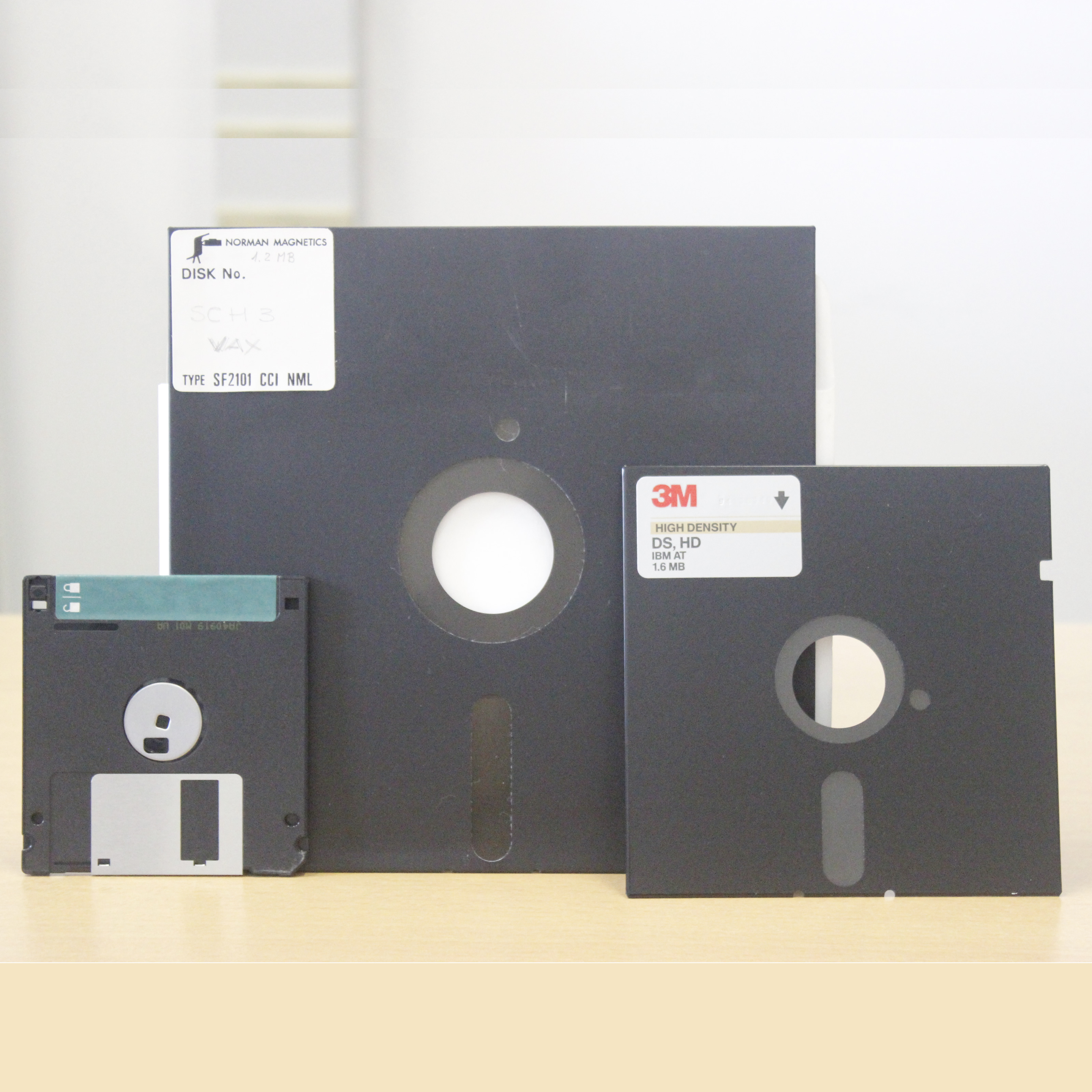
The 3.5-inch floppy disks (about 90 mm side), also called "micro floppy disks", familiarly also called "microfloppy", were the result of a further evolution of the original 8-inch floppy disks, invented and initially released by Shugart and Wang Laboratories. Despite the name and unlike the 8- and 5.25-inch floppy disks, they had a hard rather than a flexible enclosure. In addition, the magnetizable disc was equipped, instead of the central hole, with a metal pin to facilitate its traction. A metal spring cover was also introduced to protect, when not inserted in the drive, the uncovered area of the protection (previously this area was always exposed, forcing users to keep the disk in special covers when not in use). Finally, to prevent the drive from writing operations, a mechanism was inserted to discover, when necessary, the appropriate signaling hole (previously the hole had to be covered with adhesive tape, and the message sent to the drive was inverted: hole covered indicated writing prohibited, while uncovered writing allowed).
Insights
The data, in the floppies, were stored on a thin flexible disk inside the casing, in binary format and persistently, thanks to a magnetization process. In general, the data was written on a series of sectors (angular blocks of the disk) and on tracks (concentric circles with constant radius). For example, the 3½-inch HD models used 512 bytes per sector, 18 sectors per track, 80 tracks per side and 2 sides, for a total of 1 474 560 bytes per disk. Some disk controllers varied these parameters on user request, increasing the disk capacity, although disks with different configurations were not readable on machines with different types of controllers; for example, Microsoft applications released in the mid-1990s were often distributed on drives that used the DMF distribution format, a modification that allowed 1.68 MB to be stored on a 3½-inch floppy by formatting it with 21 sectors instead of 18; these disks were still recognized correctly by standard controllers. A similar practice was also implemented by IBM in the same period, for example for the distribution of its OS / 2 operating system, using the XDF format capable of storing up to 1.83 MB. On IBM PCs, MSXs, Atari STs, Amstrad CPCs, and many other platforms, discs were written using constant angular velocity (CAV) - constant sector capacity. This means that the disk spins at a constant speed and the sectors on the disk contain the same amount of information regardless of the radial location.
An attempt at the end of the decade to revive the use of floppy disks was that of the Superdisk (LS120-LS240) with a capacity of 120/240 MB, compatible with the 3½-inch floppy standard, developed by Imation, a division of 3M, without however find the favor of the market. A major popular medium was the Zip drive, with a proprietary format not compatible with 3½ ”floppies, larger (up to 750MB) developed by Iomega. With the advent of the Internet, cheap Ethernet networks and USB pendrives, floppy disks became obsolete even in data transfer and were totally disused and abandoned by the market (approximately in the first half of the 2000s).
Computer manufacturers, initially reluctant to remove floppy disk drives (typically 3½) from their new PC models to maintain backward compatibility, gradually removed the media until they disappeared completely. Apple was the first manufacturer to completely eliminate floppy disk drives from its models with the release of the iMac in 1998, while in 2003 Dell made them optional in its consumer-grade computers. Sony announced that from March 2011 it would stop producing floppy disks. Although Verbatim initially stated that it intended to continue their production, it still ceased production in 2015.
Fun facts
The floppy disk (also called disk, floppy disk or floppy disk) is a magnetic digital storage medium invented by IBM. Having been the most used external storage device for decades, the image of the floppy disk was used in the graphical interface of programs and websites to symbolize the command for saving data and this function remained even when their use as a physical medium became obsolete.